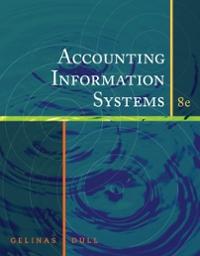Question
East Meadow is a suburban New York community. A real-estate company gathers data on appraised values of single-family houses (recorded in thousands of dollars) based
East Meadow is a suburban New York community. A real-estate company gathers data on
appraised values of single-family houses (recorded in thousands of dollars) based on the age of
the house, whether or not it has a fireplace, and whether or not it has a finished basement. The
table below shows a regression model relating a house's value to the predictor variables
Bed (=number of bedrooms),
Bath (=number of bathrooms),
Age (=age of the house, in years),
Basement (=1 if basement is finished and =0 otherwise)
Regression results for customers' house values are given below. Notice that the results only show
the a partial regression table (i.e. there are no standard errors or p-values).
Summary Measures
R-squared 0.53
Adj R-Squared 0.49
Regression Coefficients
(Intercept) -18.20
Bed 6.60
Bath 36.40
Age -3.50
Basement 17.40
Age*Basement 1.50
Based on the regression table, what is the estimated value of a house with 2 bedrooms, 2
bathrooms, 10 years old and unfinished basement?
$86 thousand
$51 thousand
$47.8 thousand
$32.8 thousand
None of the above
Based on the regression table, provide an economic interpretation for the coefficient for "Bed".
For every additional bedroom, a house's value increases by $6.60 thousand, if all other variables
remain constant.
For every additional bedroom, a house's value increases by $6.60/18.2 thousand = $0.36
thousand, if all other variables remain constant.
For every additional bedroom, a house's value increases by $(6.60 + 36.4*number of bathrooms)
thousand, if all other variables remain constant.
For every additional bedroom, a house's value decreases by $18.20 thousand, if all other
variables remain constant.
Adding two additional bedrooms, a house's value increases by $6.60 thousand, if all other
variables remain constant.
Provide an economic interpretation for the coefficient of "Age*Basement.
All else equal, houses with an unfinished basement depreciate (=decrease in value), on average,
at a rate of $1.5 thousand per year slower than houses with finished basement.
All else equal, houses with a finished basement depreciate (=decrease in value), on average, at a
rate of $1.5 thousand per year slower than houses with unfinished basement.
All else equal, houses with a finished basement depreciate (=decrease in value), on average, at a
rate of $1.5 thousand for each additional year of age.
All else equal, houses with an unfinished basement depreciate (=decrease in value), on average,
at a rate of $1.5 thousand for each additional year of age.
The coefficient has no economic meaningful interpretation!
The analyst has additional information available on whether or not the house has a swimming
pool (denoted by the variable "Pool" which equals 1 if the house has a pool and equals 0
otherwise). The analyst conjectures that the rate of depreciation for each additional year of age
is faster for houses without a pool. In order to investigate that specific conjecture, the analyst has
to...
a. ... include the variable "Pool" into the above regression model.
b. ... include the variable "Basement*Pool" into the above regression model.
c. ... include the variable "Age*Pool" into the above regression model.
d. ... include the variable "Exp(Pool)" into the above regression model.
e. ... include the variable "Log(Pool)" into the above regression model.
Step by Step Solution
There are 3 Steps involved in it
Step: 1

Get Instant Access to Expert-Tailored Solutions
See step-by-step solutions with expert insights and AI powered tools for academic success
Step: 2

Step: 3

Ace Your Homework with AI
Get the answers you need in no time with our AI-driven, step-by-step assistance
Get Started


